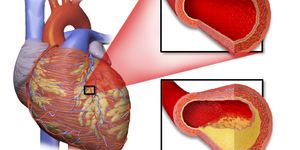The Chemistry in Yellowstone's Deadly Hot Springs
The Yellowstone National Park is famous for its geysers and the hydrothermal system otherwise known as the hot springs. But such spectacular landscape hides an unsuspected dead trap. As recent as 2016, there have been multiple accidents that led to the death of curious tourists. The latest tragedy occurred in a hot spring in Norris Geyser Basin, where a young man slipped into and got "dissolved" in the boiling, acidic water. By the time the rescue team arrived, the only thing they recover in whole was his pair of sandals.
How does the benign-looking hot spring become the "pool of death"? it is worth to mention that not all hot springs in the Yellowstone Park are as deadly as the ones involved in the accidents. The majority of them, which are a part of its volcanic hydrothermal system, are acidic because of the two major chemicals: hydrogen sulfide and carbon dioxide. When the temperature of the spring water goes up these two would quickly evaporate, reducing the acidity of the water. However, in some of the hot springs, the high acidity comes from sulfuric acid produced by certain bacteria, which are acidophilic and mesophilic (meaning they like the acidic environment and can tolerate moderate heat).
Take Ferroplasma acidiphilum for example, this type of cell-lacking microorganism gets its energy through the oxidation of iron in iron (II) disulfide-rich soil and produces sulfuric acid as a by-product. Sulfuric acid is a strong acid and it does not evaporate. Combined with the boiling temperature, this highly acidic water can easily cause severe thermal and chemical burn of skin upon contact. Therefore, it is hardly surprising that the hot springs that involved in the accident are capable of "dissolving" flesh and bones.
Source: ACS Reactions via Youtube








